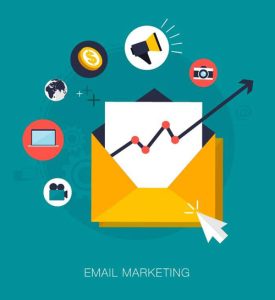Conversion Rate Optimization
Maximizing Your Website’s Potential: Tips for Boosting Conversion Rates
As a business owner, one of your primary goals is to create a website that not only looks great, but also converts visitors into customers. After all, what good is a beautiful website if it doesn’t help your business achieve its goals?
Improving website conversion rates is an ongoing process that requires a deep understanding of user behavior, effective communication, and strategic use of design elements. In this post, we’ll explore some of the key strategies for improving website conversion rates and how you can work with your web designer to achieve your goals.
Strategy #1: Understanding Conversion Rate Optimization (CRO)
Before we dive into specific strategies, let’s take a moment to define conversion rate optimization (CRO) and why it’s important. CRO is the process of improving the percentage of website visitors who take a desired action, such as making a purchase or filling out a form. By optimizing your website for conversion, you can increase the effectiveness of your online presence and generate more revenue for your business.
Strategy #2: Identifying Your Visitors’ Pain Points
One of the most effective ways to improve website conversion rates is to identify and address your visitors’ pain points. Pain points are the problems or challenges that your potential customers are facing, and addressing them can make your website more compelling and effective.
To identify your visitors’ pain points, start by conducting customer surveys or analyzing website analytics to understand what your visitors are searching for and what challenges they are facing. Once you have a clear understanding of your visitors’ pain points, you can work with your web designer to create content and messaging that addresses these challenges and provides solutions.
 Strategy #3: Creating Compelling Offers
Strategy #3: Creating Compelling Offers
Another key strategy for improving website conversion rates is to create compelling offers that motivate visitors to take action. Offers can take many forms, such as discounts, free trials, or limited-time promotions. By creating offers that align with your visitors’ pain points, you can create a sense of urgency and motivate them to take action.
Work with your web designer to create offers that are visually compelling and easy to understand. Your web designer can also help you to strategically place offers on your website to maximize their effectiveness.
 Strategy #4: Communicating Your Unique Value Proposition
Strategy #4: Communicating Your Unique Value Proposition
Your unique value proposition (UVP) is what sets you apart from your competitors and gives your potential customers a reason to choose your business over others. It’s essential to clearly communicate your UVP on your website, so that visitors understand what you offer and how it benefits them.
To create a strong UVP, start by identifying the unique features or benefits that your business provides. This might include things like exceptional customer service, a wide selection of products, or a focus on sustainability. Then, craft a message that clearly communicates these benefits in a way that resonates with your target audience.
Once you have a clear UVP message, work with your web designer to create a visually compelling display that prominently showcases your UVP on your website. This might include using bold typography, striking imagery, or other design elements that draw attention to your message.
Strategy #5: Building Trust with Social Proof

In today’s digital landscape, building trust with your visitors is essential in improving website conversion rates. Social proof is a powerful tool that can help you build trust by demonstrating that other people have had positive experiences with your business.
There are many different types of social proof that you can use on your website, including customer testimonials, reviews, case studies, or trust badges. The key is to use social proof that is relevant to your business and your target audience.
Work with your web designer to strategically place social proof on your website, such as on your homepage or product pages. This might include using customer testimonials that highlight specific benefits or features of your business, or trust badges that demonstrate your commitment to security and privacy.
Strategy #6: Making it Easy for Visitors to Take Action
One of the biggest barriers to website conversion is making it difficult for visitors to take action. Whether it’s a complicated form or a slow-loading page, anything that slows down or complicates the conversion process can lead to frustration and lost sales.
To make it easy for visitors to take action on your website, work with your web designer to optimize your website speed and simplify your forms. This might include compressing images, using caching tools to speed up page load times, or streamlining your checkout process to make it quick and easy for visitors to complete a purchase.
Your web designer can also help you to strategically place calls to action on your website to maximize their effectiveness. This might include using contrasting colors, bold typography, or other design elements that draw attention to your call to action and make it easy for visitors to take the desired action.
 Strategy #7: Using Video to Improve Conversion Rates
Strategy #7: Using Video to Improve Conversion Rates
In addition to social proof and clear messaging, video can be a powerful tool to connect with your visitors and improve website conversion rates. Video can help you showcase your products or services in a more engaging and dynamic way, and can help build trust and credibility with your visitors.
One effective way to use video on your website is to create explainer videos that showcase your products or services and explain how they work. This can help visitors understand your offerings in a more visual and engaging way, and can help overcome any objections or questions they may have.
Another effective use of video is to create customer testimonials or case study videos that highlight the positive experiences that your customers have had with your business. These videos can help build trust and credibility with your visitors by demonstrating that real people have had positive experiences with your business.
Work with your web designer to strategically place videos on your website in locations such as on your homepage or product pages. Your web designer can help you create visually compelling videos that are consistent with your branding and messaging, and can help you optimize video placement and design to maximize their effectiveness. By using video on your website, you can improve engagement, build trust, and ultimately drive more conversions and sales.
Conclusion
Improving website conversion rates is an ongoing process that requires a nuanced understanding of your visitors’ needs combined with effective communication. By working with your web designer to implement the strategies outlined above, you can create a website that not only looks great, but also converts visitors into customers.
